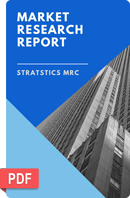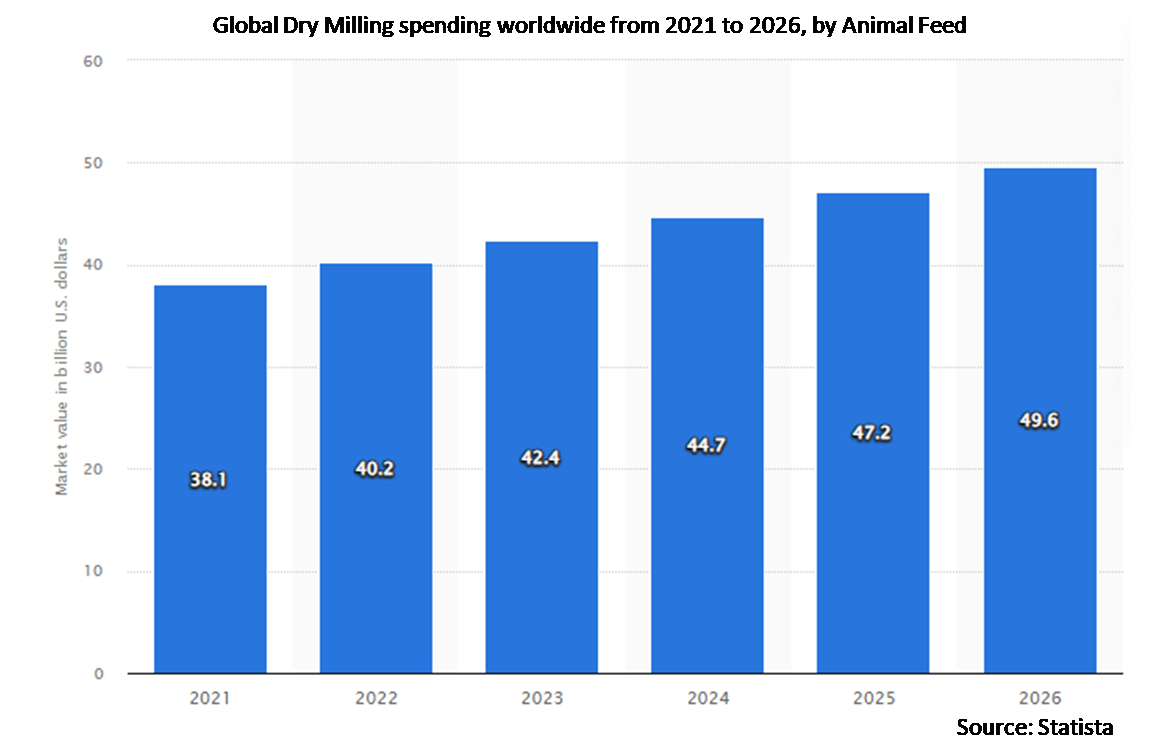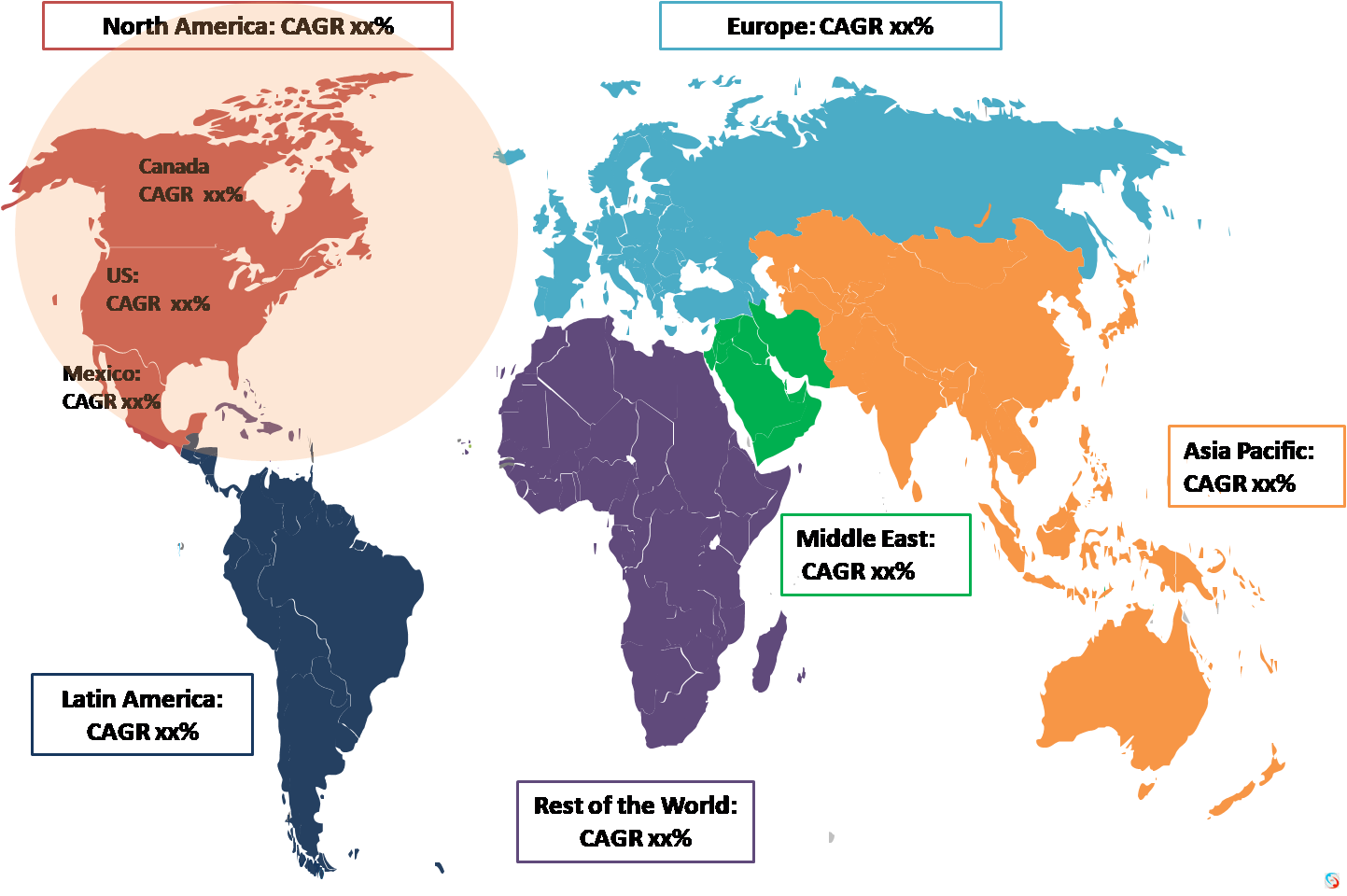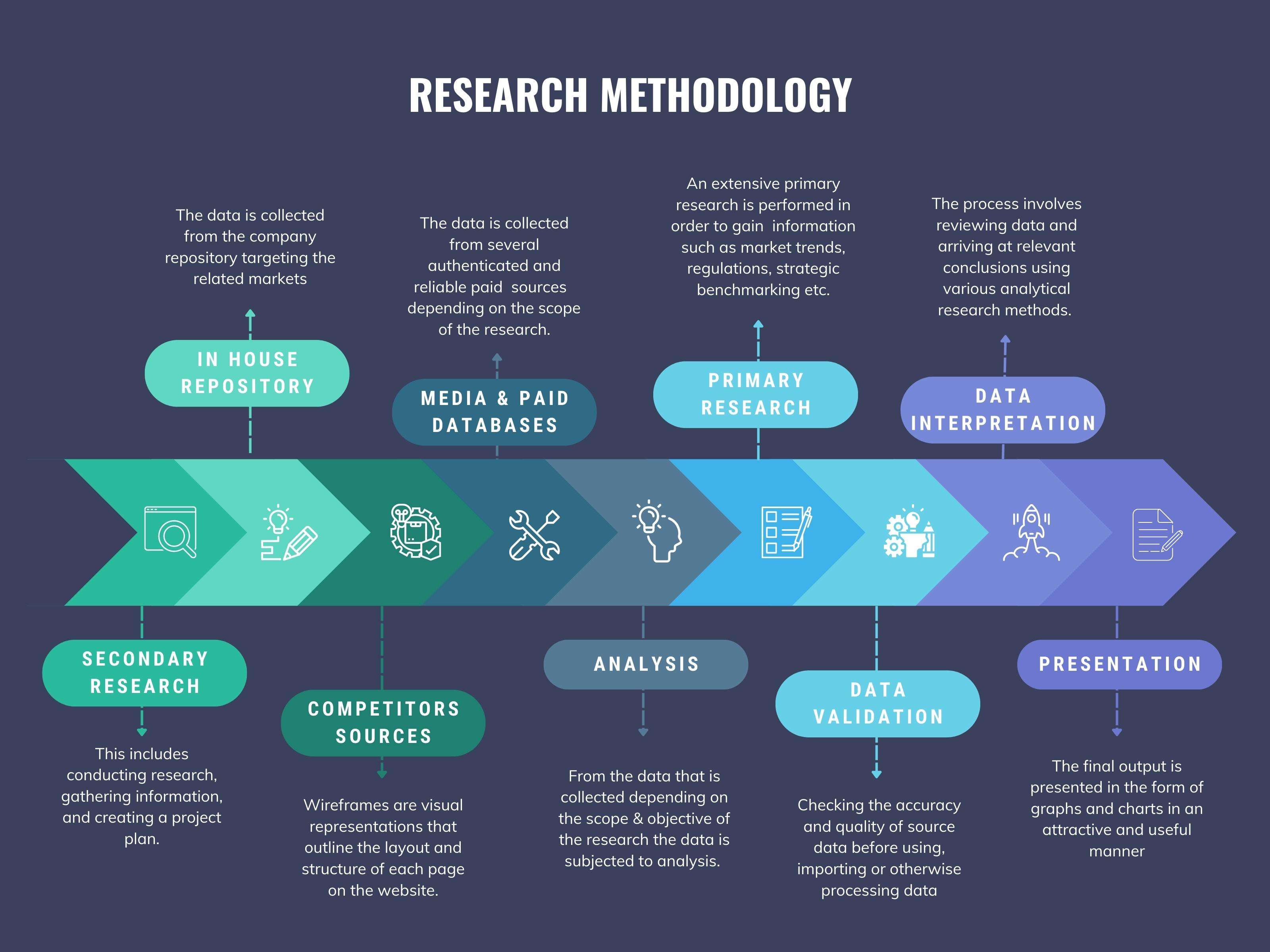
Dry Milling Market
Dry Milling Market Forecasts to 2028 - Global Analysis By Source (Yellow Corn and White Corn), By End Product (Corn Grits, Cornmeal, Corn Flour, Ethanol and Distiller's Dried Grains with Solubles (DDGS)), By Application (Fuel, Animal Feed and Food) and Geography

|
Years Covered |
2020-2028 |
|
Estimated Year Value (2022) |
US $89.9 BN |
|
Projected Year Value (2028) |
US $129.7 BN |
|
CAGR (2022 - 2028) |
6.3% |
|
Regions Covered |
North America, Europe, Asia Pacific, South America, and Middle East & Africa |
|
Countries Covered |
US, Canada, Mexico, Germany, UK, Italy, France, Spain, Japan, China, India, Australia, New Zealand, South Korea, Rest of Asia Pacific, South America, Argentina, Brazil, Chile, Middle East & Africa, Saudi Arabia, UAE, Qatar, and South Africa |
|
Largest Market |
Asia Pacific |
|
Highest Growing Market |
North America |
According to Stratistics MRC, the Global Dry Milling Market is accounted for $89.9 billion in 2022 and is expected to reach $129.7 billion by 2028 growing at a CAGR of 6.3% during the forecast period. Dry milling is primarily used to produce feedstock and fuel. New bio-based by products that are related to this process are currently being developed. Products made from corn that are intended for human and animal consumption or used to make fuel ethanol are the main focus of dry milling. The primary goal of the dry milling procedure is to as thoroughly separate the endosperm, which is primarily made of starch, from the germ and pericarp fibres as possible. One of the simplest processes for creating products from maize for human consumption is dry milling.
According to the United States Department of Agriculture (USDA), originates in the United States, which produced more than 14.42 billion bushels of corn in 2018–2019, with 14.3% of that total amount going overseas.

Market Dynamics:
Driver:
Rise in the consumption of corn flour-processed snacks and bakery products
The global increase in snack and bakery product consumption made from corn flour is anticipated to fuel the future expansion of the dry milling market. Flour made from dried whole corn kernels is referred to as corn flour. In order to give baked goods and other foods form and structure, corn flour is used as a binder. Dry milling is the process of turning corn seeds into corn flour, which has a fine and silky texture similar to whole wheat flour and is used in baked goods like bread, pancakes, and biscuits. Therefore, the growth of the dry milling market is being driven by the increase in the consumption of corn flour, processed snacks, and bakery goods.
Restraint:
High maintenance to retain corn quality
The main barrier to growth in the corn dry milling market is the expense of maintaining corn quality throughout the harvesting and dry milling processes. The growing environment, harvest procedures, and drying processes all impact corn grain quality. Choosing the right hybrid and harvesting corn at the right time are crucial for producing grain of the highest calibre. Due to inadequate infrastructure and inadequate economic support, these requirements are frequently not met in developing nations, which results in decreased output.
Opportunity:
Growing consumer awareness for renewable bio-fuel
Due to rising consumer interest in renewable biofuel, the dry milling market is anticipated to expand. Additionally, corn is one of the primary ingredients in feed, and demand for corn ethanol as a biofuel is rising quickly. The market for dry milling is likely to expand as a result of growing environmental concerns, high demand for food-grade dry ground maize products, and growth in demand for various products and applications. The market for dry milling is expected to grow as a result of factors such as rising R&D costs in the agricultural sector and rising demand for processed snacks and bakery foods.
Threat:
Storability and microbial contamination challenges
The market growth of corn has been severely constrained by the numerous storability and microbial contamination issues related to its storage. Along with this, there are high maintenance costs to maintain the quality of the finished products because they are susceptible to oxidation, which degrades their flavour and odour. Additionally, dry milling has been constrained by the possibility that abrasives in the materials themselves could eventually harm the milling machinery. Such factors are hampering the market growth.
Covid-19 Impact
The Covid-19 pandemic has caused a slight decline in the global dry milling market. Agriculture is entirely responsible for the supply of corn. Unprecedented agri-food system disruptions and disruptions to food safety and security have happened as a result of the coronavirus disease crisis and the global lockdown measures. Agriculture sub-sectors like the forage feed industry were severely impacted by the covid-19 pandemic. Additionally, the disruption of the production and marketing channels had a negative impact on the dry milling market. Numerous businesses have already warned of potential delivery delays and a drop in future product sales. Moreover, the global travel restrictions put in place by North America, Asia, and Europe are impeding opportunities for partnership and business collaboration. Subsequently, these factors are impeding the expansion of the food industry's dry milling market.
The Yellow Corn segment is expected to be the largest during the forecast period
Due to its easy availability and high demand from manufacturers, yellow corn segment held the largest market share in the dry milling market during the forecast period. Because beta carotene, the pigment that gives yellow corn its yellow colour, is converted into vitamin A during digestion, yellow corn has a higher nutritional value than white corn. Lutein is abundant in yellow corn. Moreover, growing consumer demand for animal feed is what fuels market expansion. Additionally, rising consumer demand for food products made from dry-milled corn fuels segment expansion.
The Corn Flour segment is expected to have the highest CAGR during the forecast period
The Corn Flour segment is anticipated to witness highest CAGR during the projection period. Due to the widespread use of corn flour as a binding agent in puddings and other culinary preparations, the corn flour end-product segment is anticipated to account for a significant portion of the market. Additionally, it thickens a variety of premixed soups and sauces. The consumer preference for spicy and flavorful goods is also fueling the exponential growth of the sauces and condiments industry, which in turn is propelling the corn flour market.
Region with largest share:
Due to the rising demand for dry milling in the animal feed industry the Asia-Pacific region is expected to hold the largest market share during the forecast period. The developing nations in the area with the largest market shares are China and India. The low organic feed market, penetration, rising formal offtake, etc., are major growth drivers. The largest producer and consumer of dry-milled corn products is China.
Region with highest CAGR:
Over the forecast period, North America is anticipated to register the highest CAGR. The United States is the world's top corn producer. 95% of the world's corn production, as a result, the area ranks as one of the world's top producers. One of the key elements influencing the regional market for dry milled corn is the abundant supply of raw materials. Additionally, the region's robust supply chain makes it possible for the end-user industries to easily access raw materials, which drives up regional market growth.

Key players in the market
Some of the key players profiled in the Dry Milling Market include Cargill, Alto Ingredients, Inc., Lifeline Foods, LLc, Pacific Ethanol Inc., Green Plains Inc., Flint Hills Resources LLC, C.H. Guenther and Son, Incorporated, Valero Energy Corporation, Archer Daniels Midland Company, Bunge Limited, SunoptA, Didion Milling Inc. and Semo Milling, LLc.
Key Developments:
In July 2021, AGCO, a US-based agricultural machinery company, collaborated with Ocrim for an undisclosed amount. The agreement would benefit customers worldwide by bringing together the seed, grain, and food industry expertise of AGCO's Cimbria and GSI brands with Ocrim's extensive food milling capability. Ocrim is an Italy-based provider for wheat, corn, and cereal mills.
In September 2018, Dasca Group and Bunge Ltd., signed a joint venture agreement following which the companies started a new corn milling and origination facility in Ukraine which was expected to be functional by the end of 2019. This joint venture is expected to increase the production capacities of companies, thereby aiding its revenue generation.
In January 2018, Cargill Incorporated and Arabian Agricultural Services Company, a Saudi food ingredients firm. together started, The Middle East Food Solutions Company (MEFSCO) corn milling facility in Saudi Arabia, owing to their joint venture. This new plant will triple the joint venture’s overall production volume and double the production of glucose and starch.
Sources Covered:
• Yellow Corn
• White Corn
Products Covered:
• Corn Grits
• Cornmeal
• Corn Flour
• Ethanol
• Distiller's Dried Grains with Solubles (DDGS)
• Other Products
Applications Covered:
• Fuel
• Animal Feed
• Food
Regions Covered:
• North America
o US
o Canada
o Mexico
• Europe
o Germany
o UK
o Italy
o France
o Spain
o Rest of Europe
• Asia Pacific
o Japan
o China
o India
o Australia
o New Zealand
o South Korea
o Rest of Asia Pacific
• South America
o Argentina
o Brazil
o Chile
o Rest of South America
• Middle East & Africa
o Saudi Arabia
o UAE
o Qatar
o South Africa
o Rest of Middle East & Africa
What our report offers:
- Market share assessments for the regional and country-level segments
- Strategic recommendations for the new entrants
- Covers Market data for the years 2020, 2021, 2022, 2025, and 2028
- Market Trends (Drivers, Constraints, Opportunities, Threats, Challenges, Investment Opportunities, and recommendations)
- Strategic recommendations in key business segments based on the market estimations
- Competitive landscaping mapping the key common trends
- Company profiling with detailed strategies, financials, and recent developments
- Supply chain trends mapping the latest technological advancements
Free Customization Offerings:
All the customers of this report will be entitled to receive one of the following free customization options:
• Company Profiling
o Comprehensive profiling of additional market players (up to 3)
o SWOT Analysis of key players (up to 3)
• Regional Segmentation
o Market estimations, Forecasts and CAGR of any prominent country as per the client's interest (Note: Depends on feasibility check)
• Competitive Benchmarking
o Benchmarking of key players based on product portfolio, geographical presence, and strategic alliances
Table of Contents
1 Executive Summary
2 Preface
2.1 Abstract
2.2 Stake Holders
2.3 Research Scope
2.4 Research Methodology
2.4.1 Data Mining
2.4.2 Data Analysis
2.4.3 Data Validation
2.4.4 Research Approach
2.5 Research Sources
2.5.1 Primary Research Sources
2.5.2 Secondary Research Sources
2.5.3 Assumptions
3 Market Trend Analysis
3.1 Introduction
3.2 Drivers
3.3 Restraints
3.4 Opportunities
3.5 Threats
3.6 Product Analysis
3.7 Application Analysis
3.8 Emerging Markets
3.9 Impact of Covid-19
4 Porters Five Force Analysis
4.1 Bargaining power of suppliers
4.2 Bargaining power of buyers
4.3 Threat of substitutes
4.4 Threat of new entrants
4.5 Competitive rivalry
5 Global Dry Milling Market, By Source
5.1 Introduction
5.2 Yellow Corn
5.3 White Corn
6 Global Dry Milling Market, By Product
6.1 Introduction
6.2 Corn Grits
6.3 Cornmeal
6.4 Corn Flour
6.5 Ethanol
6.6 Distiller's Dried Grains with Solubles (DDGS)
6.7 Other Products
7 Global Dry Milling Market, By Application
7.1 Introduction
7.2 Fuel
7.3 Animal Feed
7.4 Food
8 Global Dry Milling Market, By Geography
8.1 Introduction
8.2 North America
8.2.1 US
8.2.2 Canada
8.2.3 Mexico
8.3 Europe
8.3.1 Germany
8.3.2 UK
8.3.3 Italy
8.3.4 France
8.3.5 Spain
8.3.6 Rest of Europe
8.4 Asia Pacific
8.4.1 Japan
8.4.2 China
8.4.3 India
8.4.4 Australia
8.4.5 New Zealand
8.4.6 South Korea
8.4.7 Rest of Asia Pacific
8.5 South America
8.5.1 Argentina
8.5.2 Brazil
8.5.3 Chile
8.5.4 Rest of South America
8.6 Middle East & Africa
8.6.1 Saudi Arabia
8.6.2 UAE
8.6.3 Qatar
8.6.4 South Africa
8.6.5 Rest of Middle East & Africa
9 Key Developments
9.1 Agreements, Partnerships, Collaborations and Joint Ventures
9.2 Acquisitions & Mergers
9.3 New Product Launch
9.4 Expansions
9.5 Other Key Strategies
10 Company Profiling
10.1 Cargill
10.2 Alto Ingredients, Inc.
10.3 Lifeline Foods, LLc
10.4 Pacific Ethanol Inc.
10.5 Green Plains Inc.
10.6 Flint Hills Resources LLC
10.7 C.H. Guenther and Son, Incorporated
10.8 Valero Energy Corporation
10.9 Archer Daniels Midland Company
10.10 Bunge Limited
10.11 SunoptA
10.12 Didion Milling Inc.
10.13 Semo Milling, LLc
List of Tables
1 Global Dry Milling Market Outlook, By Region (2020-2028) ($MN)
2 Global Dry Milling Market Outlook, By Source (2020-2028) ($MN)
3 Global Dry Milling Market Outlook, By Yellow Corn (2020-2028) ($MN)
4 Global Dry Milling Market Outlook, By White Corn (2020-2028) ($MN)
5 Global Dry Milling Market Outlook, By Product (2020-2028) ($MN)
6 Global Dry Milling Market Outlook, By Corn Grits (2020-2028) ($MN)
7 Global Dry Milling Market Outlook, By Cornmeal (2020-2028) ($MN)
8 Global Dry Milling Market Outlook, By Corn Flour (2020-2028) ($MN)
9 Global Dry Milling Market Outlook, By Ethanol (2020-2028) ($MN)
10 Global Dry Milling Market Outlook, By Distiller's Dried Grains with Solubles (DDGS) (2020-2028) ($MN)
11 Global Dry Milling Market Outlook, By Other Products (2020-2028) ($MN)
12 Global Dry Milling Market Outlook, By Application (2020-2028) ($MN)
13 Global Dry Milling Market Outlook, By Fuel (2020-2028) ($MN)
14 Global Dry Milling Market Outlook, By Animal Feed (2020-2028) ($MN)
15 Global Dry Milling Market Outlook, By Food (2020-2028) ($MN)
16 North America Dry Milling Market Outlook, By Country (2020-2028) ($MN)
17 North America Dry Milling Market Outlook, By Source (2020-2028) ($MN)
18 North America Dry Milling Market Outlook, By Yellow Corn (2020-2028) ($MN)
19 North America Dry Milling Market Outlook, By White Corn (2020-2028) ($MN)
20 North America Dry Milling Market Outlook, By Product (2020-2028) ($MN)
21 North America Dry Milling Market Outlook, By Corn Grits (2020-2028) ($MN)
22 North America Dry Milling Market Outlook, By Cornmeal (2020-2028) ($MN)
23 North America Dry Milling Market Outlook, By Corn Flour (2020-2028) ($MN)
24 North America Dry Milling Market Outlook, By Ethanol (2020-2028) ($MN)
25 North America Dry Milling Market Outlook, By Distiller's Dried Grains with Solubles (DDGS) (2020-2028) ($MN)
26 North America Dry Milling Market Outlook, By Other Products (2020-2028) ($MN)
27 North America Dry Milling Market Outlook, By Application (2020-2028) ($MN)
28 North America Dry Milling Market Outlook, By Fuel (2020-2028) ($MN)
29 North America Dry Milling Market Outlook, By Animal Feed (2020-2028) ($MN)
30 North America Dry Milling Market Outlook, By Food (2020-2028) ($MN)
31 Europe Dry Milling Market Outlook, By Country (2020-2028) ($MN)
32 Europe Dry Milling Market Outlook, By Source (2020-2028) ($MN)
33 Europe Dry Milling Market Outlook, By Yellow Corn (2020-2028) ($MN)
34 Europe Dry Milling Market Outlook, By White Corn (2020-2028) ($MN)
35 Europe Dry Milling Market Outlook, By Product (2020-2028) ($MN)
36 Europe Dry Milling Market Outlook, By Corn Grits (2020-2028) ($MN)
37 Europe Dry Milling Market Outlook, By Cornmeal (2020-2028) ($MN)
38 Europe Dry Milling Market Outlook, By Corn Flour (2020-2028) ($MN)
39 Europe Dry Milling Market Outlook, By Ethanol (2020-2028) ($MN)
40 Europe Dry Milling Market Outlook, By Distiller's Dried Grains with Solubles (DDGS) (2020-2028) ($MN)
41 Europe Dry Milling Market Outlook, By Other Products (2020-2028) ($MN)
42 Europe Dry Milling Market Outlook, By Application (2020-2028) ($MN)
43 Europe Dry Milling Market Outlook, By Fuel (2020-2028) ($MN)
44 Europe Dry Milling Market Outlook, By Animal Feed (2020-2028) ($MN)
45 Europe Dry Milling Market Outlook, By Food (2020-2028) ($MN)
46 Asia Pacific Dry Milling Market Outlook, By Country (2020-2028) ($MN)
47 Asia Pacific Dry Milling Market Outlook, By Source (2020-2028) ($MN)
48 Asia Pacific Dry Milling Market Outlook, By Yellow Corn (2020-2028) ($MN)
49 Asia Pacific Dry Milling Market Outlook, By White Corn (2020-2028) ($MN)
50 Asia Pacific Dry Milling Market Outlook, By Product (2020-2028) ($MN)
51 Asia Pacific Dry Milling Market Outlook, By Corn Grits (2020-2028) ($MN)
52 Asia Pacific Dry Milling Market Outlook, By Cornmeal (2020-2028) ($MN)
53 Asia Pacific Dry Milling Market Outlook, By Corn Flour (2020-2028) ($MN)
54 Asia Pacific Dry Milling Market Outlook, By Ethanol (2020-2028) ($MN)
55 Asia Pacific Dry Milling Market Outlook, By Distiller's Dried Grains with Solubles (DDGS) (2020-2028) ($MN)
56 Asia Pacific Dry Milling Market Outlook, By Other Products (2020-2028) ($MN)
57 Asia Pacific Dry Milling Market Outlook, By Application (2020-2028) ($MN)
58 Asia Pacific Dry Milling Market Outlook, By Fuel (2020-2028) ($MN)
59 Asia Pacific Dry Milling Market Outlook, By Animal Feed (2020-2028) ($MN)
60 Asia Pacific Dry Milling Market Outlook, By Food (2020-2028) ($MN)
61 South America Dry Milling Market Outlook, By Country (2020-2028) ($MN)
62 South America Dry Milling Market Outlook, By Source (2020-2028) ($MN)
63 South America Dry Milling Market Outlook, By Yellow Corn (2020-2028) ($MN)
64 South America Dry Milling Market Outlook, By White Corn (2020-2028) ($MN)
65 South America Dry Milling Market Outlook, By Product (2020-2028) ($MN)
66 South America Dry Milling Market Outlook, By Corn Grits (2020-2028) ($MN)
67 South America Dry Milling Market Outlook, By Cornmeal (2020-2028) ($MN)
68 South America Dry Milling Market Outlook, By Corn Flour (2020-2028) ($MN)
69 South America Dry Milling Market Outlook, By Ethanol (2020-2028) ($MN)
70 South America Dry Milling Market Outlook, By Distiller's Dried Grains with Solubles (DDGS) (2020-2028) ($MN)
71 South America Dry Milling Market Outlook, By Other Products (2020-2028) ($MN)
72 South America Dry Milling Market Outlook, By Application (2020-2028) ($MN)
73 South America Dry Milling Market Outlook, By Fuel (2020-2028) ($MN)
74 South America Dry Milling Market Outlook, By Animal Feed (2020-2028) ($MN)
75 South America Dry Milling Market Outlook, By Food (2020-2028) ($MN)
76 Middle East and Africa Dry Milling Market Outlook, By Country (2020-2028) ($MN)
77 Middle East and Africa Dry Milling Market Outlook, By Source (2020-2028) ($MN)
78 Middle East and Africa Dry Milling Market Outlook, By Yellow Corn (2020-2028) ($MN)
79 Middle East and Africa Dry Milling Market Outlook, By White Corn (2020-2028) ($MN)
80 Middle East and Africa Dry Milling Market Outlook, By Product (2020-2028) ($MN)
81 Middle East and Africa Dry Milling Market Outlook, By Corn Grits (2020-2028) ($MN)
82 Middle East and Africa Dry Milling Market Outlook, By Cornmeal (2020-2028) ($MN)
83 Middle East and Africa Dry Milling Market Outlook, By Corn Flour (2020-2028) ($MN)
84 Middle East and Africa Dry Milling Market Outlook, By Ethanol (2020-2028) ($MN)
85 Middle East and Africa Dry Milling Market Outlook, By Distiller's Dried Grains with Solubles (DDGS) (2020-2028) ($MN)
86 Middle East and Africa Dry Milling Market Outlook, By Other Products (2020-2028) ($MN)
87 Middle East and Africa Dry Milling Market Outlook, By Application (2020-2028) ($MN)
88 Middle East and Africa Dry Milling Market Outlook, By Fuel (2020-2028) ($MN)
89 Middle East and Africa Dry Milling Market Outlook, By Animal Feed (2020-2028) ($MN)
90 Middle East and Africa Dry Milling Market Outlook, By Food (2020-2028) ($MN)
List of Figures
RESEARCH METHODOLOGY

We at ‘Stratistics’ opt for an extensive research approach which involves data mining, data validation, and data analysis. The various research sources include in-house repository, secondary research, competitor’s sources, social media research, client internal data, and primary research.
Our team of analysts prefers the most reliable and authenticated data sources in order to perform the comprehensive literature search. With access to most of the authenticated data bases our team highly considers the best mix of information through various sources to obtain extensive and accurate analysis.
Each report takes an average time of a month and a team of 4 industry analysts. The time may vary depending on the scope and data availability of the desired market report. The various parameters used in the market assessment are standardized in order to enhance the data accuracy.
Data Mining
The data is collected from several authenticated, reliable, paid and unpaid sources and is filtered depending on the scope & objective of the research. Our reports repository acts as an added advantage in this procedure. Data gathering from the raw material suppliers, distributors and the manufacturers is performed on a regular basis, this helps in the comprehensive understanding of the products value chain. Apart from the above mentioned sources the data is also collected from the industry consultants to ensure the objective of the study is in the right direction.
Market trends such as technological advancements, regulatory affairs, market dynamics (Drivers, Restraints, Opportunities and Challenges) are obtained from scientific journals, market related national & international associations and organizations.
Data Analysis
From the data that is collected depending on the scope & objective of the research the data is subjected for the analysis. The critical steps that we follow for the data analysis include:
- Product Lifecycle Analysis
- Competitor analysis
- Risk analysis
- Porters Analysis
- PESTEL Analysis
- SWOT Analysis
The data engineering is performed by the core industry experts considering both the Marketing Mix Modeling and the Demand Forecasting. The marketing mix modeling makes use of multiple-regression techniques to predict the optimal mix of marketing variables. Regression factor is based on a number of variables and how they relate to an outcome such as sales or profits.
Data Validation
The data validation is performed by the exhaustive primary research from the expert interviews. This includes telephonic interviews, focus groups, face to face interviews, and questionnaires to validate our research from all aspects. The industry experts we approach come from the leading firms, involved in the supply chain ranging from the suppliers, distributors to the manufacturers and consumers so as to ensure an unbiased analysis.
We are in touch with more than 15,000 industry experts with the right mix of consultants, CEO's, presidents, vice presidents, managers, experts from both supply side and demand side, executives and so on.
The data validation involves the primary research from the industry experts belonging to:
- Leading Companies
- Suppliers & Distributors
- Manufacturers
- Consumers
- Industry/Strategic Consultants
Apart from the data validation the primary research also helps in performing the fill gap research, i.e. providing solutions for the unmet needs of the research which helps in enhancing the reports quality.
For more details about research methodology, kindly write to us at info@strategymrc.com
Frequently Asked Questions
In case of any queries regarding this report, you can contact the customer service by filing the “Inquiry Before Buy” form available on the right hand side. You may also contact us through email: info@strategymrc.com or phone: +1-301-202-5929
Yes, the samples are available for all the published reports. You can request them by filling the “Request Sample” option available in this page.
Yes, you can request a sample with your specific requirements. All the customized samples will be provided as per the requirement with the real data masked.
All our reports are available in Digital PDF format. In case if you require them in any other formats, such as PPT, Excel etc you can submit a request through “Inquiry Before Buy” form available on the right hand side. You may also contact us through email: info@strategymrc.com or phone: +1-301-202-5929
We offer a free 15% customization with every purchase. This requirement can be fulfilled for both pre and post sale. You may send your customization requirements through email at info@strategymrc.com or call us on +1-301-202-5929.
We have 3 different licensing options available in electronic format.
- Single User Licence: Allows one person, typically the buyer, to have access to the ordered product. The ordered product cannot be distributed to anyone else.
- 2-5 User Licence: Allows the ordered product to be shared among a maximum of 5 people within your organisation.
- Corporate License: Allows the product to be shared among all employees of your organisation regardless of their geographical location.
All our reports are typically be emailed to you as an attachment.
To order any available report you need to register on our website. The payment can be made either through CCAvenue or PayPal payments gateways which accept all international cards.
We extend our support to 6 months post sale. A post sale customization is also provided to cover your unmet needs in the report.
Request Customization
We provide a free 15% customization on every purchase. This requirement can be fulfilled for both pre and post sale. You may send your customization requirements through email at info@strategymrc.com or call us on +1-301-202-5929.
Note: This customization is absolutely free until it falls under the 15% bracket. If your requirement exceeds this a feasibility check will be performed. Post that, a quote will be provided along with the timelines.
WHY CHOOSE US ?

Assured Quality
Best in class reports with high standard of research integrity

24X7 Research Support
Continuous support to ensure the best customer experience.

Free Customization
Adding more values to your product of interest.

Safe & Secure Access
Providing a secured environment for all online transactions.

Trusted by 600+ Brands
Serving the most reputed brands across the world.
